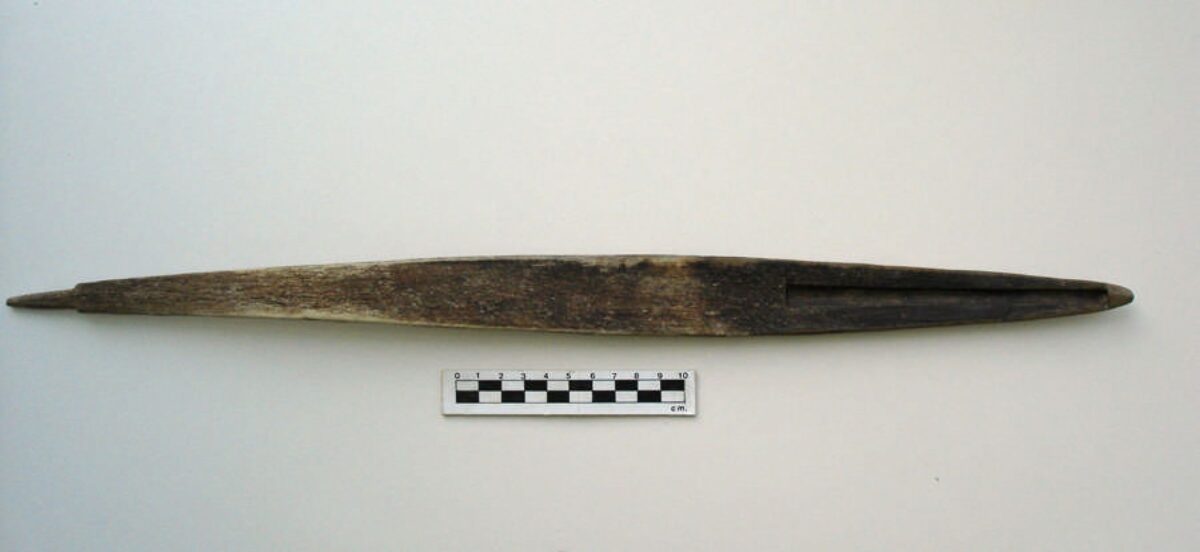2007.
By Grant Keddie
Quiltanton Lake Atlatl (EcRg-Y:1). A Technical Description
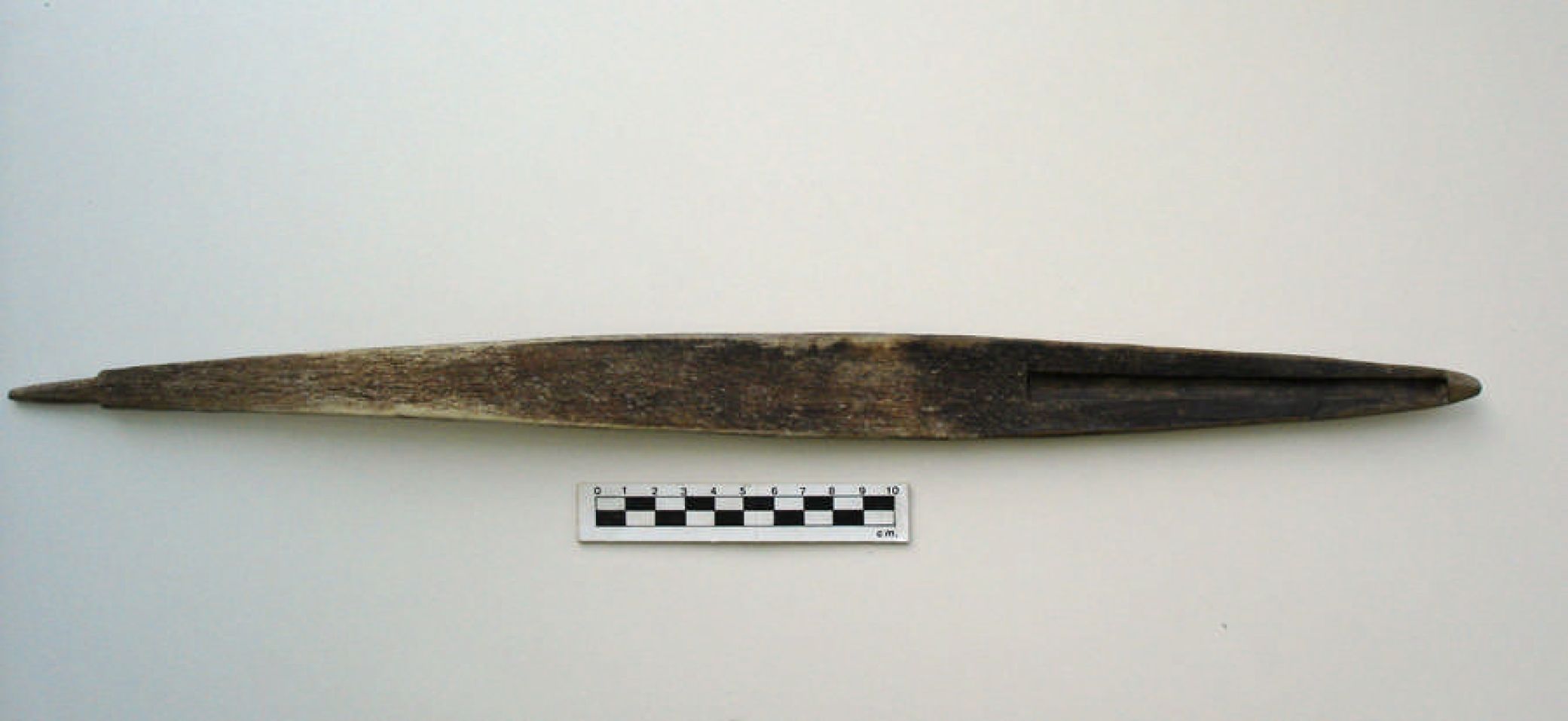
Introduction
An Atlatl is a weapon composed of a flexible light spear or dart and a shorter throwing board that acts as a lever to propel the dart through the air. The throwing boards themselves are often called atlatls.
This is currently the only example of the throwing board component of an atlatl weapon found in British Columbia. It was found in 1988 by Pat Rozek, a heavy equipment operator. Pat found it sticking out of the mud at the bottom of the freshly drained Quiltanton Lake – located in the Highland Valley east of Ashcroft in the southern Interior of British Columbia .
A radio-carbon date obtained on the specimen showed that it is about 2000 years old. [1950 BP (years before 1950 A.D.), plus or minus 100 years; Simon Fraser University radio carbon lab # – RIDDL 1141].
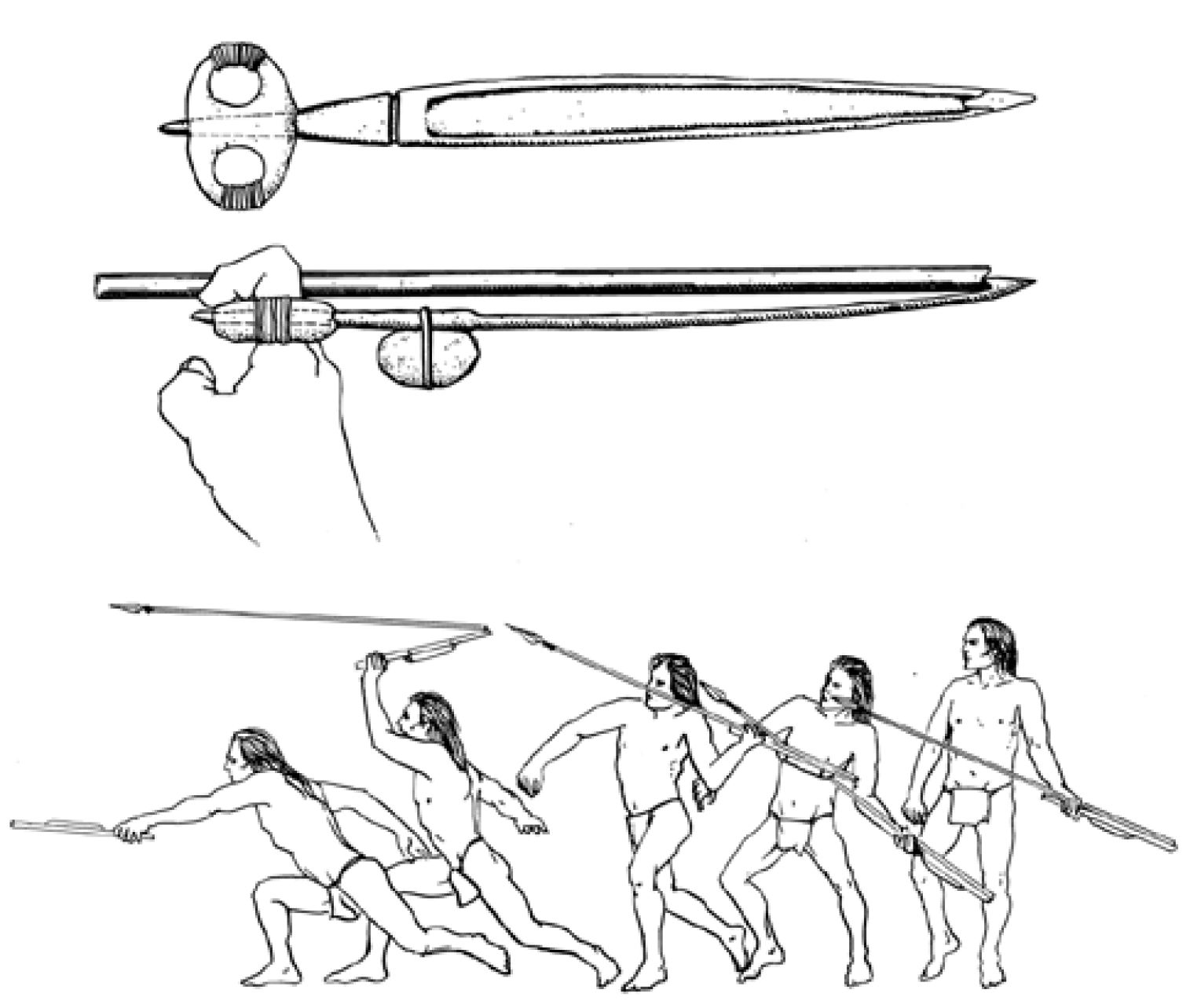
Description
The Quiltanton Lake atlatl or throwing board is made of antler and weighs 124 grams. Based on its length and curvature, it is most likely caribou antler, but has not been positively identified as such. The only alternative would be elk antler, but the distance between tines, even on very large elk, is shorter than the length of this artifact. A separate handle attachment is missing from the proximal end. It is speculated that the latter may have been made of an oval piece of wood or antler with two holes or a looped rawhide, forinserting the fingers, similar to those found attached to wooden throwing boards found in dry caves in the United States. Its measurements are: Length 505mm; Maximum width 36mm; Maximum thickness 8.5mm.
A narrow tapering element for the attachment of a handle is at the proximal end of the throwing board. It is 34mm long by a maximum or 9mm wide and 6.5mm thick.
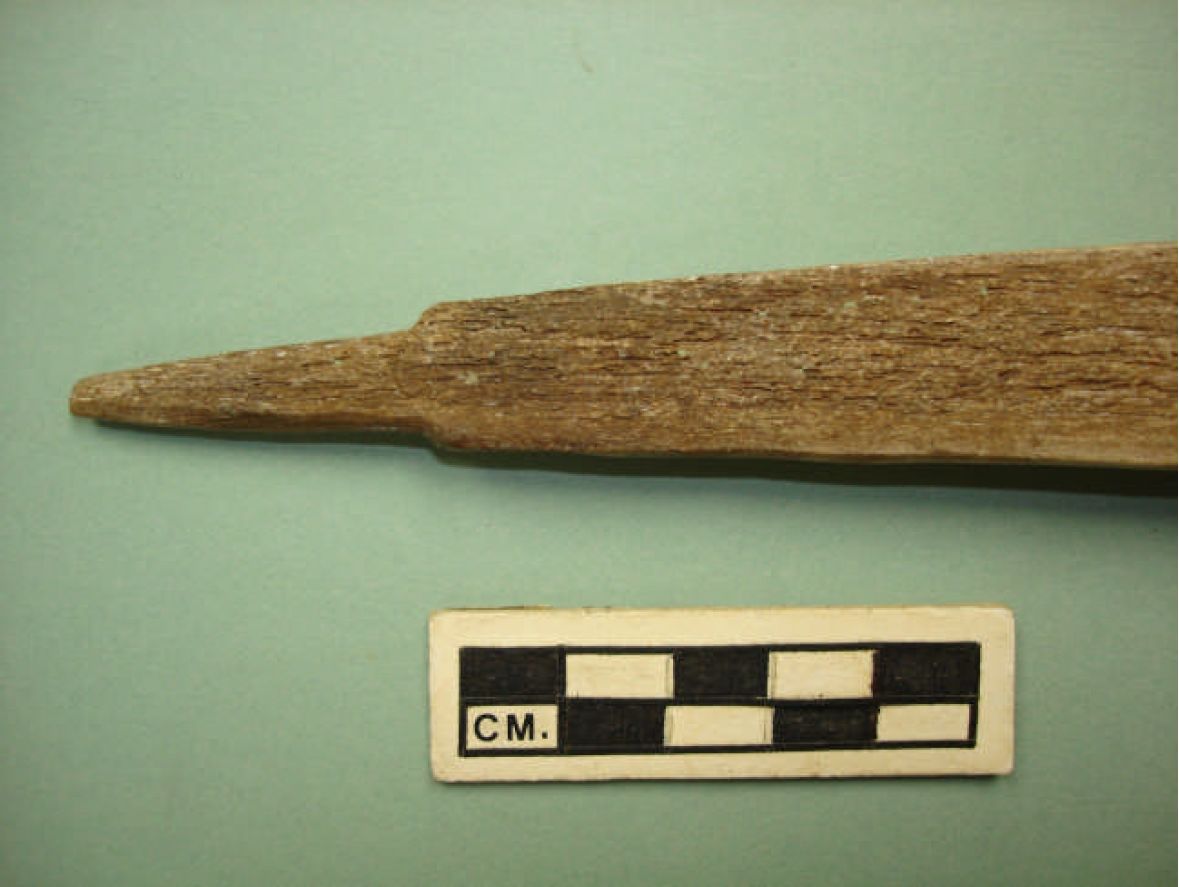
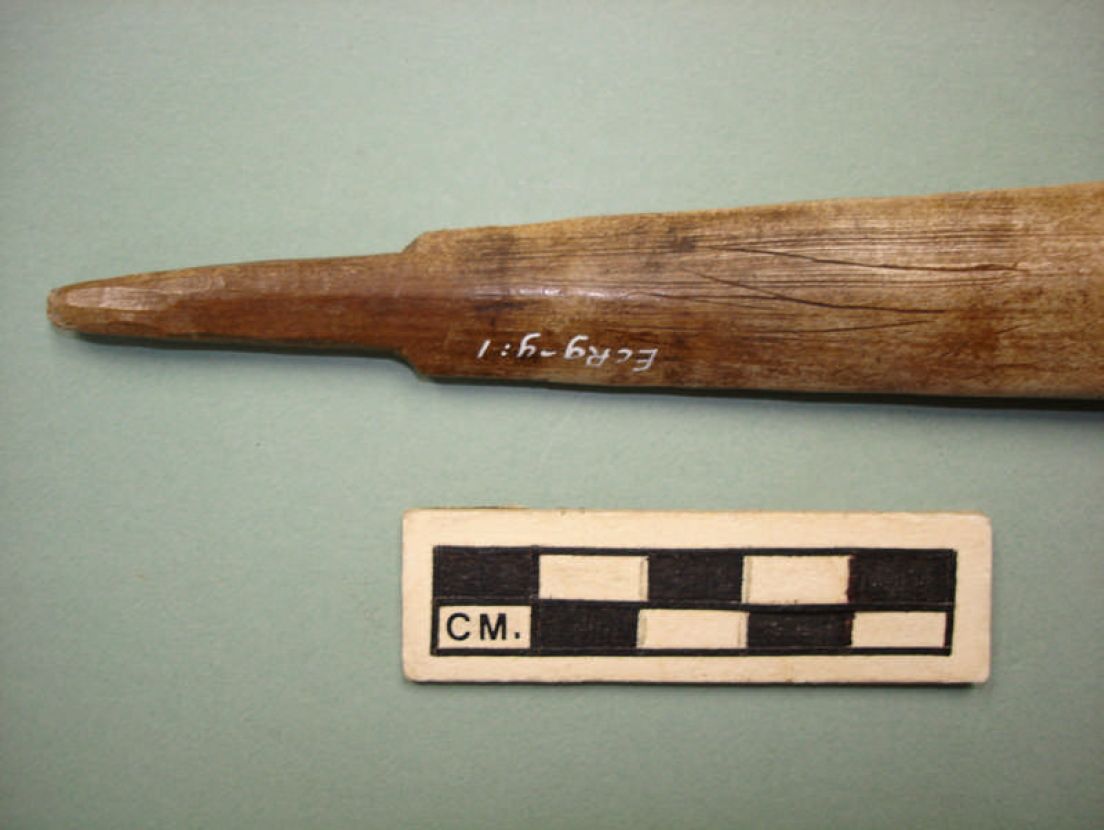
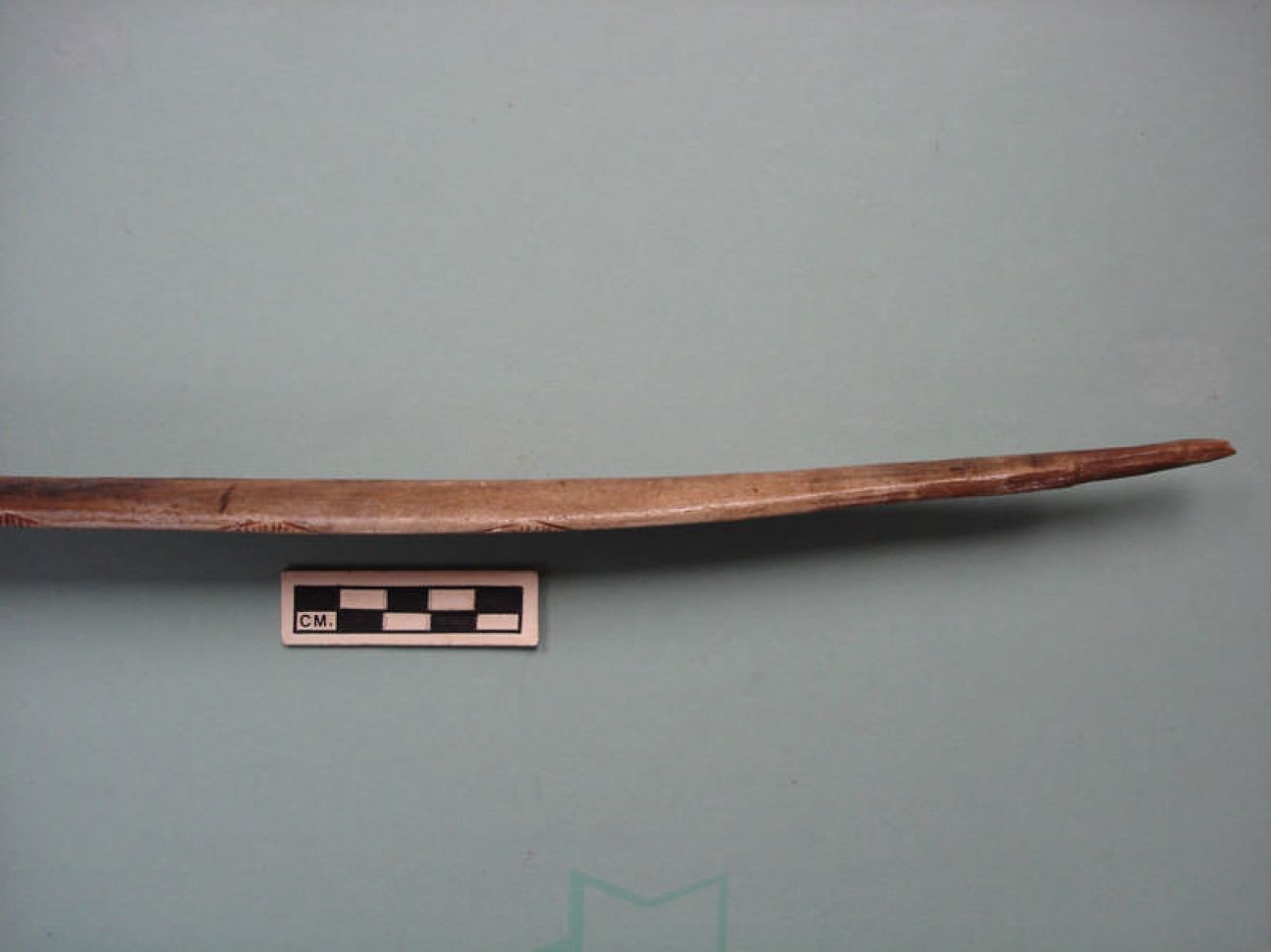
The board is widest at 280mm from the proximal end, from where it tapers in both directions. For those wishing to reconstruct the specimen for experimental purposes, the width measurements at 20mm increments are – starting at 40mm from the proximal end: 14mm; 18mm; 21mm; 22.5mm; 25mm; 27mm; 29mm; 31.5mm; 33.1mm; 33.5mm; 35mm; 36mm; 35.5mm; 35.3mm; 34mm; 32mm; 30mm; 27.6mm; 25mm; 18.5mm; 14mm; 6mm. The board thickness is relatively uniform. Between 60mm and 240mm from the proximal end, the thickness gradually increases from 7.5mm to 7.9mm; for the next 140mm the thickness is close to 8mm, and from here to the distal end it gradually decreases to 5mm.
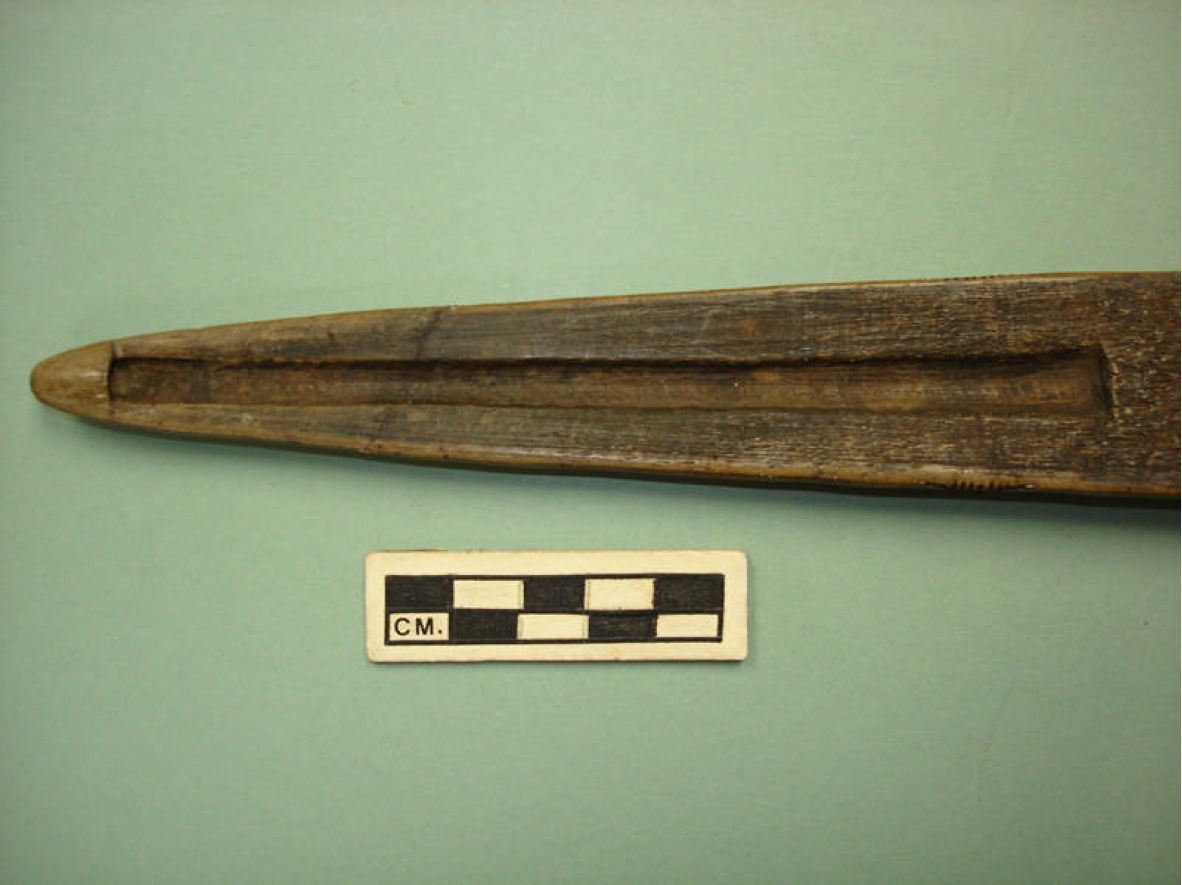
The dorsal surface is slightly convex, reflecting to some degree the natural curvature of the antler surface. The ventral surface is flat with a groove at the distal end to facilitate positioning of the throwing dart. The dart groove is 142mm long and varies from 7mm at the distal end to 8mm at the centre and 12mm at the proximal end. There is a slight flaring expansion of the groove at its extreme proximal end. The groove extends 2mm into a short 14mm long and 4.8mm high raised distal tip of the throwing board. The groove ends in a full rounded end inside the 13mm long tip. This distal tip projects 3mm above the flat ventral surface – thereby forming a raised spur. The wood of this round hole-end of the groove is compressed and shows striations. This could be caused by the repeated fitting of the end of the dart into the hole.
There is another alternative to explain the function of the compressed hole on the end of the throwing board. The wood may have been compressed in the manufacture of the hole and the subsequent pressure exerted from placing the end of a small bone spur tied into it. This possible missing bone spur would have likely been tied into the groove in a manner that can be observed on some historic throwing boards from other parts of the world. However, there is no difference of color patterns on the atlatl that would likely result if a spur was tied into the end of the groove.
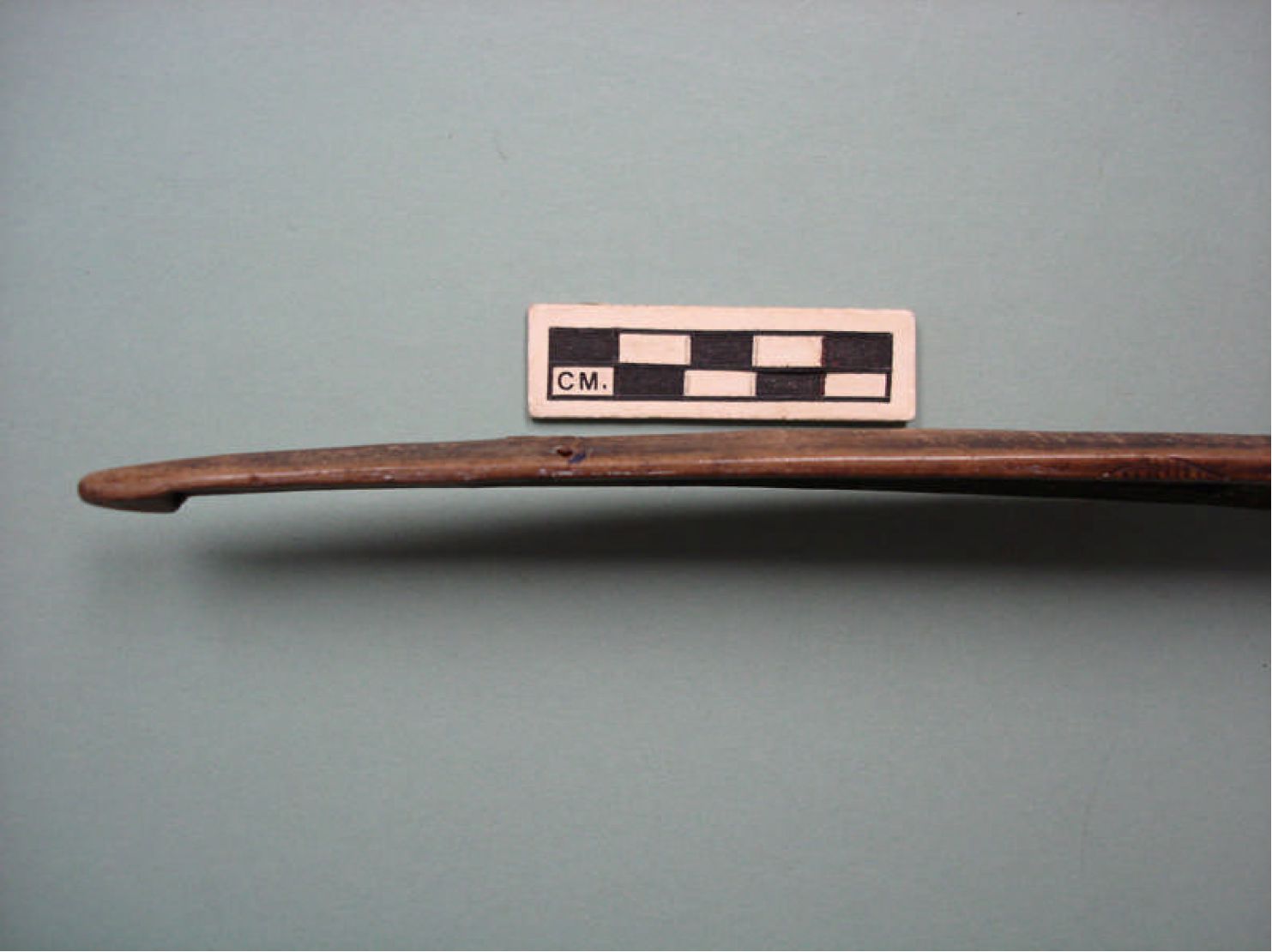
Design elements: Five sets of a similar geometric design are located on both edges of the throwing board – opposite to each other. The flat edge of the ventral surface forms the unmarked base of the grooved triangular designs. Continuous parallel and vertical lines are contained within each triangle. The triangular designs are 18mm – 22mm long and 30mm—35mm apart. Their centers are spaced about 14mm; 20mm; 25mm; and 31mm from the proximal end.

